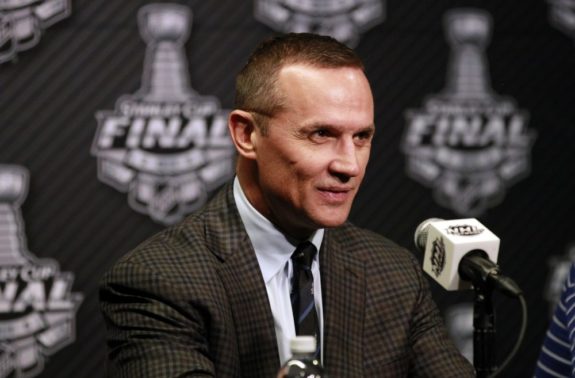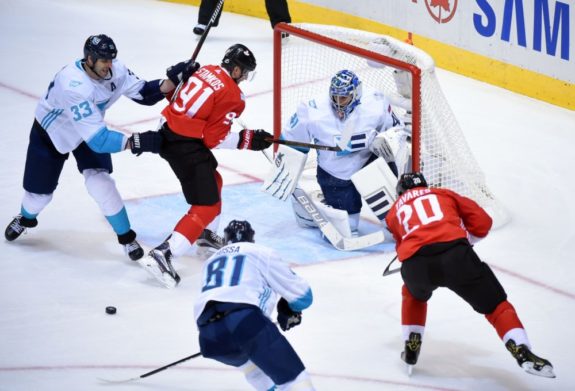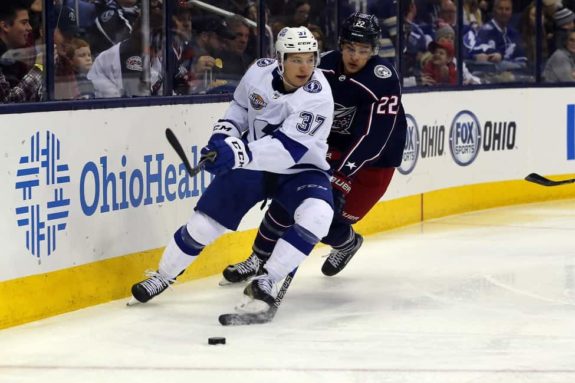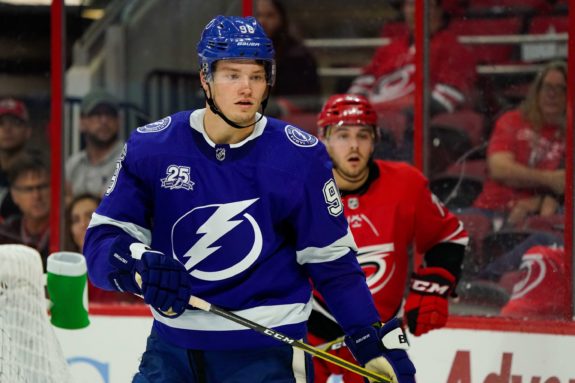In sports, expectations can be tricky. For NHL teams, expectations can be difficult to manage entering a brand-new season. Low ones may bruise psyches, while sky-high ones could produce a sense of overconfidence among players.
For the Tampa Bay Lightning, high expectations have become the norm. Since their surprising Stanley Cup Final appearance in 2015, they have been playoff contenders. Over the past few years, many publications have picked them to either make the Cup Final or win it all.
They all have good reasons too, as the Lightning regularly return nearly all of the previous season’s team. From core guys like Steven Stamkos, Nikita Kucherov, Victor Hedman and Andrei Vasilevskiy, to trade deadline acquisitions Ryan McDonagh and J.T. Miller, general manager Steve Yzerman did everything possible to keep this successful bunch together. The hope is that they’ll finally, after years of falling short, reach the ultimate goal of hoisting Lord Stanley’s Cup.

A few things stand in the way, though. Injuries, like the one sidelining Ryan Callahan to open the season, and expectations. High preseason expectations can hinder a team in their quest to win it all. How is that possible? I’ll give you two recent scenarios.
Slow Start Dooms Lightning to Postseason Miss
Coming off a trip to Game 7 of the Eastern Conference Final, the Lightning entered the 2016-17 season with little time to prepare. This was a direct result of the inaugural World Cup of Hockey cutting into an already short training camp. Being unprepared, there wasn’t much time to fine-tune the team’s play.
Another drawback of the World Cup tournament was that it increased the chance of injury to participating players. While not an official cause, the Lightning saw what that extra wear-and-tear could produce. Stamkos’ torn meniscus on Nov. 15 might have been a case of bad luck, but it’s more likely he suffered a minor injury while helping Canada reach the gold medal game. The result was devastating.

In saying that, the Lightning’s start before that fateful mid-November day wasn’t what was expected from a team picked by many to win the Stanley Cup. They went 10-4-1. However, that record included a few avoidable setbacks. A 6-1 loss to the New York Rangers at Madison Square Garden was the most lopsided on the scoreboard, but there was cause for concern before then.
An Oct. 20 shutout loss on home ice to the Colorado Avalanche hurt. So did one to the New Jersey Devils. Both teams finished at the bottom of the standings for 2016-17, so the Lightning found themselves messing with fire early on.
Losing to the Avalanche broke a 3-0 record to begin the season. The defeat to the Devils, meanwhile, was the second in a three-game losing skid. It was new territory for a Lightning team that didn’t lose more than two in a row the prior season.
Stamkos’ injury on Nov. 15 hurt on two fronts. First, Nikita Kucherov found himself rotating linemates nearly every game. Secondly, the loss of the captain affected the team as a whole. Stamkos provided a majority of the Lightning’s offense in the previous two seasons. His absence led to other players being forced into expanded roles.
Ondrej Palat endured his third-worst season as a pro, while 2015 postseason beast Tyler Johnson had his second-worst NHL season. Injuries contributed to this, as the two combined to play 141 games. Defensively, both were at their worst, with Johnson putting up the first minus rating of his career. That left the Lightning with little offense outside of Kucherov and the end result wasn’t pretty, as a team picked to be Cup favorites fell to 22nd in the league at the All-Star Break.
Quick Start Propels Lightning to Atlantic Division Title
One season removed from the calamity of the year before, the Lightning faced high expectations again in 2017-18. The only differences were rest and a full, uninterrupted training camp.
For the Lightning, both were welcome. Players were ready and itching to get back on the ice after enduring their longest offseason since 2013. That was evident from the drop of the puck, with the team going 10-2-1 to start the season. The losses were to 2018 playoff or playoff bubble teams and they followed them up with victories.

More impressively, the youth that cracked the opening night roster showed poise beyond their years. Both Yanni Gourde and offseason acquisition Mikhail Sergachev helped the Lightning throughout the season, but most noticeably before the calendar flipped to 2018. Each rookie had a breakout game, though Sergachev’s came at an opportune time for the team.
With the top line of Kucherov, Stamkos and Vladislav Namestnikov kept off the scoreboard, Sergachev made certain that netminder Andrei Vasilevskiy’s outstanding performance on Oct. 19 was rewarded. His first two NHL goals enabled the Lightning to walk out of Nationwide Arena with a 2-0 victory over the Columbus Blue Jackets.

Another impressive statistic was that the Lightning didn’t reach the double-digits in regulation losses until after the New Year. By then, they were pretty firmly entrenched in the postseason race and had a semi-comfortable lead in the Eastern Conference and Atlantic Division.
Unfortunately, that led to complacency down the stretch, with the Boston Bruins coming on strong. A snowstorm forced the Bruins to reschedule a game against the Florida Panthers for the day after the regular season concluded, though. That extra back-to-back, combined with the Panthers’ desire to play spoiler, helped the Lightning edge out their playoff rivals from Boston for both the Atlantic Division crown and top seed in the playoffs.
As one can see, high expectations can be tricky. A strong October, devoid of inexcusable losses, makes a difference. The Lightning proved that in two different seasons with practically the same team, dispelling the notion that expectations don’t play at least a small role in a team’s final record.